
Ozyptila trux, the yellow leaflitter crab spider, is a crab spider species with Palearctic distribution.
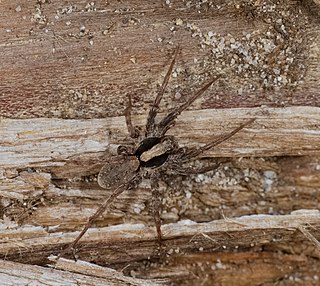
Xerolycosa nemoralis, or the burnt wolf spider, is a species of wolf spider found from western Europe eastwards to the Pacific.

Trochosa terricola is known as the ground wolf spider, is a wolf spider which is common and widespread in western and central Europe. It has been recorded as prey for the pompilid wasp.

Trochosa spinipalpis is a specialised species of Palearctic, wolf spider which is restricted to bogs and other wetlands.
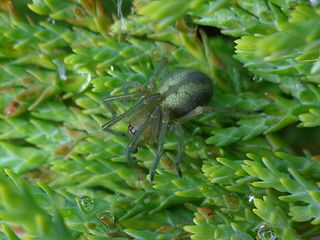
Cheiracanthium erraticum, the two-clawed hunting spider, is a species of Palearctic spider of the family Cheiracanthiidae.

Xysticus cristatus, the common crab spider, is a European spider from the family Thomisidae.
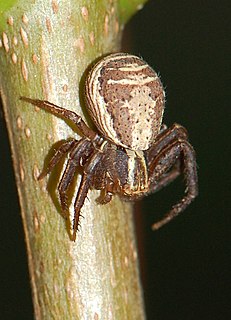
Xysticus ulmi, the swamp crab spider, is a European crab spider of the family Thomisidae which prefers damp habitats. It was first described by the German zoologist Carl Wilhelm Hahn in 1831.

Phylloneta sisyphia, the mothercare spider, is a species of comb-footed spider from the genus Phylloneta.
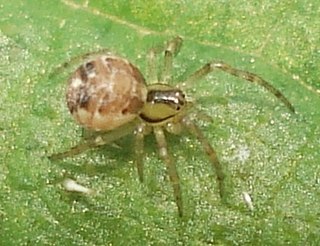
Phylloneta impressa is a species of comb-footed spider from the genus Phylloneta with a Holarctic distribution.

Cryphoeca silvicola is a small species of dwarf sheet spider in the family Cybaeidae which has a Palearctic distribution. The generic name, Cryphoeca, means hidden and the specific name silvicola means "living in the woods".

Salticus cingulatus is a Palearctic jumping spider of the family Salticidae.

Zora is a genus of spiders in the family Miturgidae, subfamily Zorinae, consisting of small to medium entelegyne, ecribellate spiders. They can be identified as they have two claws with claw tufts, distinct longitudinal bands on the cephalothorax, 4-2-2 arrangement of the eight eyes and long overlapping spines on the first two tibiae and metatarsi. Their abdomens show distinct colour patterns which may be useful in identification to species. There are 17 species in the genus which have a Holarctic distribution, mostly in Europe and the Middle East but with two species in North America. The type species is Zora spinimana.

Zora spinimana is a prowling spider of the family Miturgidae with a Palearctic distribution. It is the type species of the genus Zora.

Zora silvestris is a prowling spider in the family Miturgidae which is found in Europe and central Asia.

Philodromus aureolus, the wandering crab spider, is a mainly European running crab spider of the family Philodromidae. The taxonomy of the species group named after Philodromus aureolus is in a state of flux and a number of new species have recently been recognised.

Micaria is a genus of ground spiders that was first described by Niklas Westring in 1851. They are 1.3 to 6.5 millimetres long.

Anitistea elegans, the marsh combtail, is a species of dwarf sheet web spider in the family Hahniidae which has a Palearctic distribution.
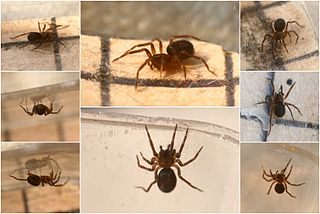
Iberina montana, the common combtailed spider, which was formerly better known as Hahnia montana, is a species of dwarf sheet spider, family Hahniidae, which is found mainly in Europe.

Araneus grossus is a orb-weaver spider species. The species is one of the largest orb-weaver spiders in Europe. It is found in South and Southeast Europe and Central Asia.
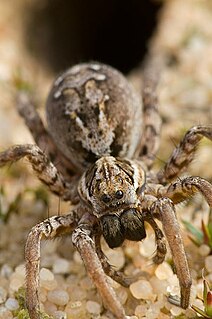
Alopecosa fabrilis, known as the great fox-spider, is a species of wolf spider in the family Lycosidae. It is predominately found in Europe and was rediscovered in the United Kingdom in 2020 after being thought extinct.



















